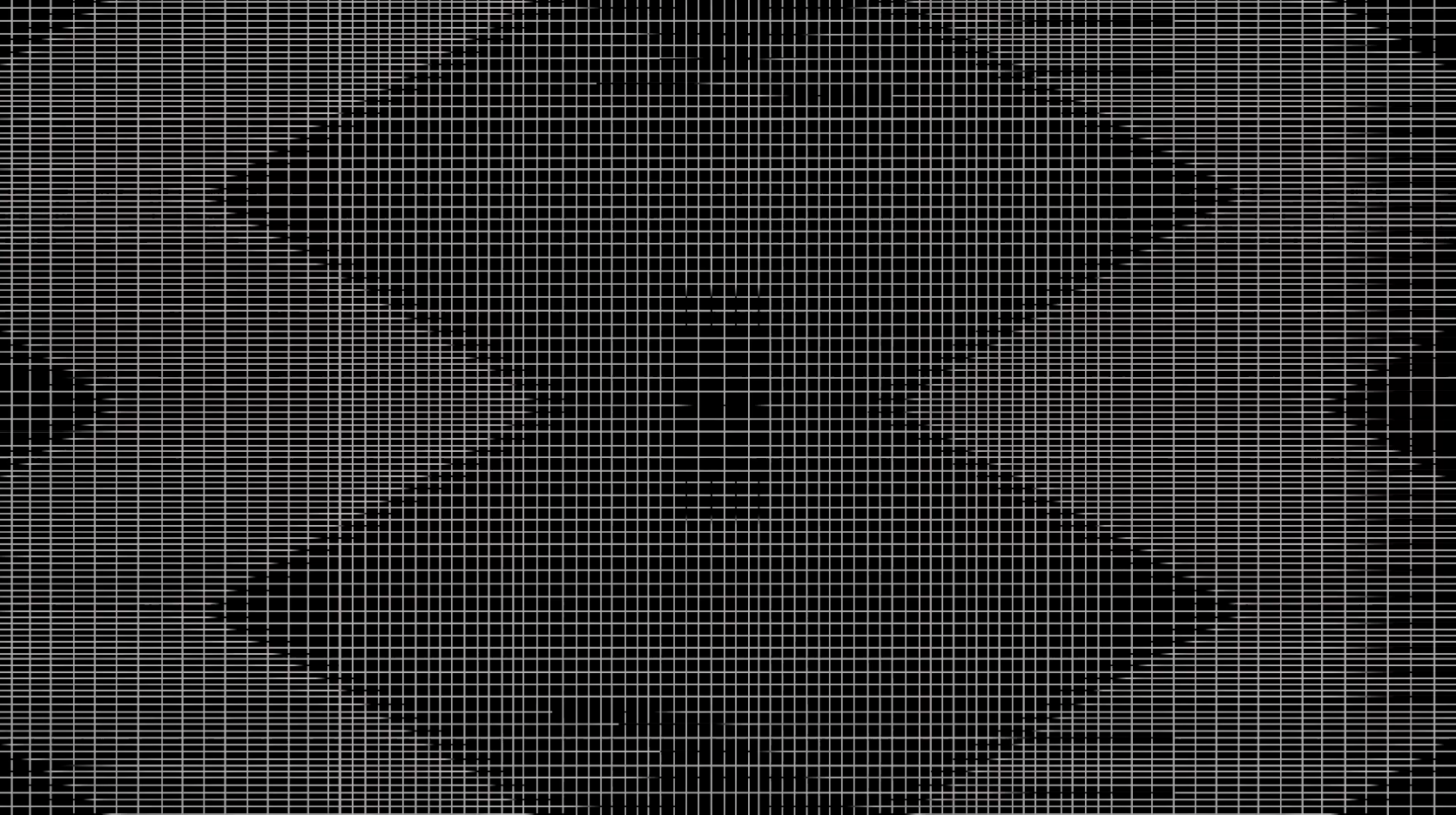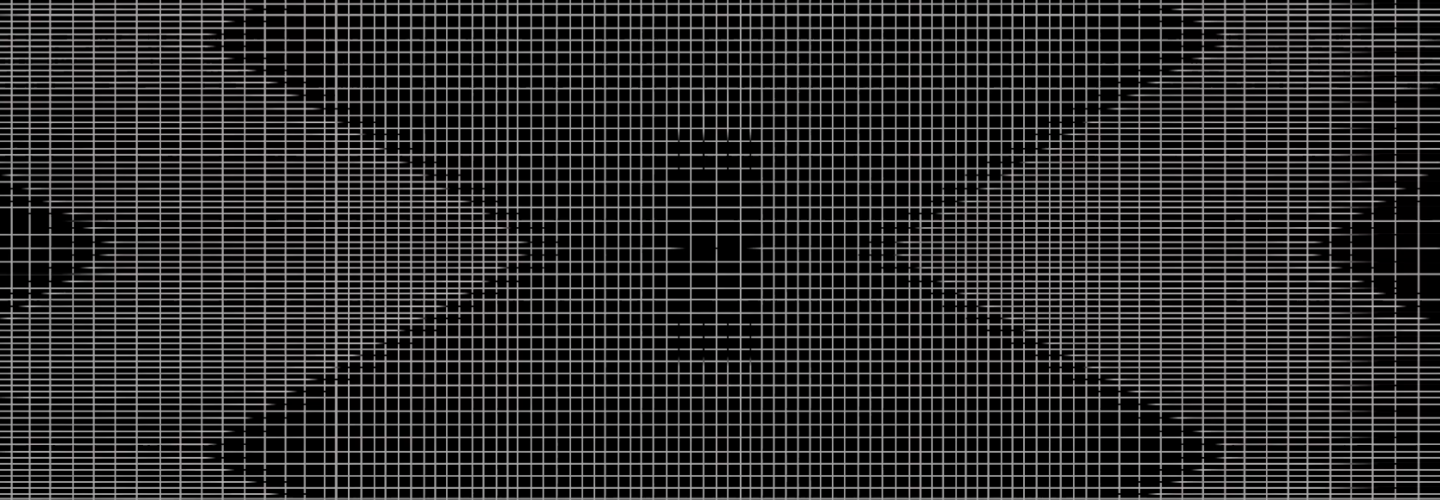
Writing about film online, whenever a friend releases a new video there’s always that instant dread that you’re not going to like it…with animator Jeanette Bonds that never seems the case. I first came in contact with Jeanette’s work at the Encounters Short Film Festival in 2013, when I witnessed her narrative short Trusts & Estates and the reaction it caused at the screening made me instantly aware she was a filmmaker I wanted to talk to. I’ve always been drawn to work that challenges audiences and I suppose work that courts controversy – Trusts & Estates was definitely one such film. Since first encountering Jeanette’s work, I’ve followed her career quite closely as she continues to champion innovative animation through her ‘GLAS Animation’ grant programme/festival, write for Short of the Week and create her own films. Recently releasing her latest video, an abstract music video for Kid606 track B Minor, DN jumped at the chance to catch up with her career and quiz her about this latest animation.
How did the Kid606 collaboration come about?
I listened to Kid606 quite a lot when I was a teenager. I remember taking a trip to San Francisco to visit a friend of mine. She took me to a party in Oakland where Kid606 was DJing. I had that youthful sensation of it being endlessly cool to be at a house party where Kid606 was DJing rather than seeing him on a stage. Flash forward to a decade later….An animation screening I had worked on just ended and I went out to the theater’s back patio and approached my friend and colleague Johnny Woods who was talking to an exceedingly enthusiastic and mysterious man. He and Johnny were reminiscing about their excitement upon their first encounter with one another. They kept repeating “I didn’t know who you were and then when I realized who you were I was excited…” This went back and forth for sometime and I had no idea who this mysterious man was. All I saw was bouts of enthusiasm spilling out of their mouths and limbs. Finally Johnny tells me the mysterious man is Kid606 and I join in on the “No Way!” parade. From that point on Kid606 and I talked through the night, cracking jokes, discovering we had similar San Diego acquaintances and immediately we became friends. Not too long after I had my work featured at Ghosting.tv. Unfortunately I could not attend the screening but Kid606 live-texted to me the audience’s reactions to my work. He told me he loved my work and if I’d ever like to collaborate with him on visuals and music it’d be an open invitation. Not long after he sent an email with his latest ambient album to be released and asked if I’d be interested in making a video for it and thus the collaboration was born. He gave me the audio and let me do as I pleased. As a side note, whenever I put him on a guest list I put him as Kid606 instead of Miguel just so there’s a bit of confusion when he goes to get his tickets. I like to imagine he goes to the ticket booth asking for Miguel and the ticketeer says, “No, I’m sorry. There’s no Miguel on this list.” He’d then have to say “Try Kid606,” after which he gets his tickets, but not until after a look of confusion on the part of the ticketeer. And that I find satisfying and always snicker at the thought of the exchange. Although I’m fairly certain he anticipates it now.

The style and concept of the piece seems perfectly matched to Kid606’s sound – was this a concept you’d been toying with before this opportunity arose or was it inspired by the music?
The style and concept was most definitely inspired by the music. When it comes to my more abstract work it is important for sound to dictate imagery. When Kid606 sent me the complete album, he told me to pick which track I connected with most, and while the album in its entirety is great, B Minor affected me physically. The song made me lose track of what I was doing and I became entranced by its meditative nature. I emailed Miguel with my request for B Minor and immediately got to work. The final outcome was not what I had originally envisioned but it’s what resulted and I’m certainly happy it resulted as such.
Non-narrative works act as a good buffer between longer projects, allowing me to have the sort of mental space I need to navigate what my next narrative might be.
Your previous films, that grabbed our attention here at DN (Trusts & Estates & Hallgrímur og Jeremy) showcase a totally different aesthetic from your B Minor video – what made you adopt this approach for your music video?
Oddly enough the vast majority of my work has been more non-narrative and geometric, and for the most part exceedingly tedious, but then again all animation is exceedingly tedious. I tend not to highlight my non-narrative work too much. I took a departure from that aesthetic and method of working. Prior to Trusts & Estates, which was my first narrative animated film, I was an non-narrative filmmaker and installation artist. I was starting to do well in that community and participated in quite a few museum and gallery shows, but I wanted to try narrative 2D animation. It’s a different type of challenge and one that I find difficult. It’s hard for me, and for a lot of people I think, to be able to put yourself out there and tell a story of your own. Generally speaking I have two modes of operating artistically. One being narrative and one being more non-narrative. But I have to do both simultaneously for my own sanity.
As someone who likes to maintain momentum but to switch projects when they start to drive you insane (and animation certainly is capable of doing that) it’s quite nice to switch from something very technical and narrative to something that’s more experiential. It’s not too often I can commit to a narrative but while I await the next narrative that strikes my fancy it’s best I shift my focus onto something non-narrative if for no other reason than to keep that creative momentum going. Often times non-narrative works act as a good buffer between longer projects, allowing me to have the sort of mental space I need to navigate what my next narrative might be. I’m glad I had the opportunity to work with Miguel on B Minor as it made me come back to making non-narrative work which, as much as I tried to deny it at times, I thoroughly enjoy making.

Images from Jeanette Bonds’ OED: Res Ipsa Installation
Again, from what we’ve seen of your work in those aforementioned films, you prefer more ‘traditional’ animation techniques – what can you tell us about your production this time around? I’m not an animator myself, but knowing a little something about working with layers, I can only begin to try and understand how complex things must have got – what software did you use, how long did it take, just how many layers did you have, how did you stop yourself going insane?
A few years ago I created an installation titled OED: Res Ipsa which included a rather tedious video component. I photographed each page of the OED, sequenced the images as a film, and projected that film onto a wall. The installation was more complex and massive and was difficult to replicate. I hadn’t done anything with the video since and have always wanted a reason to use it for something else. In B Minor, I took a segment of the OED video and stretched it out in After Effects to be just a few pixels in width. Each line you see in B Minor is that segment of the OED film stretched out and duplicated hundreds of times. The film in total took me just a few months. The first couple months was experimenting with visual styles and patterns. The third month was when I created the bulk of the piece. The earlier segments didn’t drive me too insane, but as the lines multiplied and became more dense it became quite difficult to keep track of all of them. The ending in particular required even more patience than I would hope for simply because so much time was spent waiting for the render to make sure it came out as I imagined. But I try to remind myself patience is an easy thing to have as long as I take a step back and accept these things are just a series of small and easy tasks. It’s always just one foot in front of the other. But not quite in a What About Bob? sort of way. In some ways I can’t help but think that if I can’t do something as simple as keep track of a few lines or doing something monotonous then I really need to do some reevaluating. That being said, the part that drove me the most insane was waiting for it to render. I like the challenge of focusing on something that at its core is quite simple, but when it comes to waiting I’m not the most patient person. I am willing to wait forever, but I’ll certainly complain while doing so. For this film I had no choice but to maintain focus and remain calm. Although I’m sure my husband would probably tell you otherwise. There were certainly moments where he could hear me cursing from the other room.
It felt as though I was playing a game with a specific set of rules that I may or may not have noticeably followed.
The music video seems to lean towards more inducing a state-of-mind than telling a narrative – is this a fair appraisal? What were your aims for the video?
It always feels a bit silly describing my intentions with abstract work as the language to describe it is always somewhat personal and feels a bit cheesy. It’s easy to be cynical about discussing non-narrative work. It’s almost impossible to delve into it without that caveat as well. But in the interest of sincerity, my aims were to lure the viewer in with a very simple and identifiable pattern that both guided them through the sounds while enhancing the audio experience. In a sense I wanted to build the trust of the viewer and gently ease them into navigating through a certain defined space, but as the film progresses have those identifiable patterns become so encompassing the viewer no longer cares about identifying the pattern that is to come, but rather experience the intricate web as, well, simply an experience. I understand these types of films aren’t for everyone but for the ones who have an affinity for this type of work, I’d like for them to feel as though there is a sense of engagement. That being said, I’m fairly certain those statements are quite possibly a load of crap. While I can now reflect upon what my aims were while making the video, during the time when I was making the video I wasn’t actively thinking about these ideas. With enough time it’s easy to look back and reevaluate subconscious thoughts, but I try to remind myself that they were, in fact, subconscious thoughts. Sometimes when describing what my aims were for a specific project I can’t help but wonder if I believe what I’m saying, if I’m trying ideas on for size, or if I’m simply afraid to be that open and sincere about these sorts of things. The making of B Minor was a bit experiential for myself and to be quite honest it felt as though I was playing a game with a specific set of rules that I may or may not have noticeably followed.
What are you working on next?
Quite a few things. I have an abstract project in the works as well as my narrative LNWC (Late Night Work Club) film Departures. Additionally I’m doing the intro animation for an upcoming feature, a commissioned 2D project, and from the looks of it I’ll be collaborating with a few more musicians doing visuals for their performances. But my big project is launching the GLAS Animation Festival which takes place March 2016 in Berkeley. It’s becoming increasingly difficult to answer this question as there are so many answers and it’s difficult not to be excited by it all.


